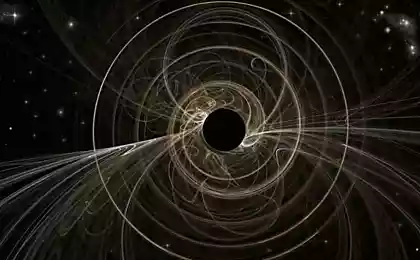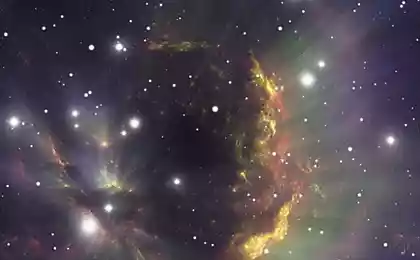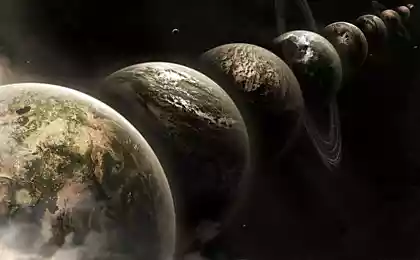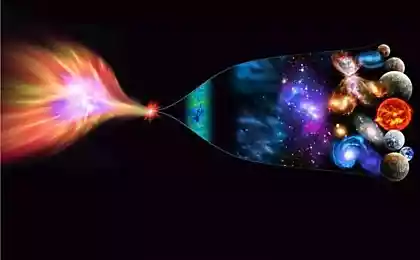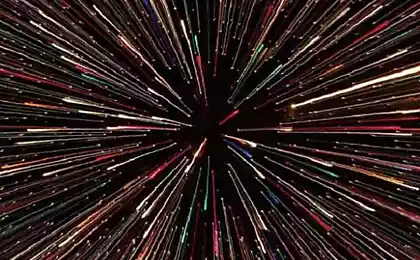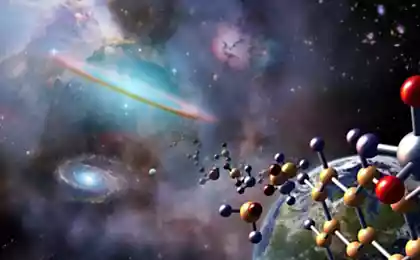583
Japanese researchers presented evidence that our universe is a hologram
In 1997, theoretical physicist Juan Maldacena proposed that an audacious model of the Universe in which gravity arising from infinitesimally thin, vibrating strings could be reinterpreted in terms of well established physics. 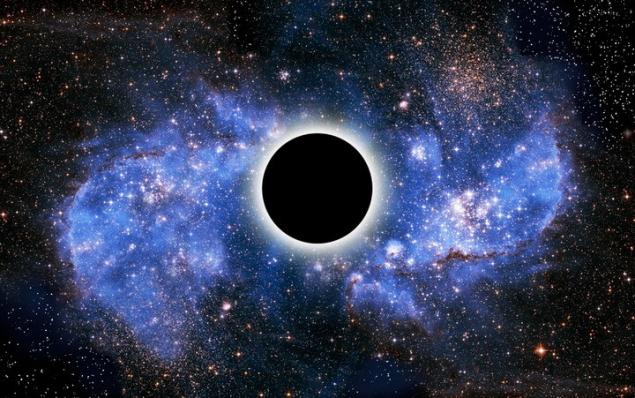
The mathematically intricate world of strings which exist in nine dimensions of space plus one dimension of time, seemed hologram: the real action will occur in a more simple, more flat spaces, where there is no gravity.
The idea Maldacena was enthusiastically greeted by physicists because it offered a way to put the popular but still unproven theory of strings on solid footing. His method resolves the apparent contradiction between quantum physics and General theory of gravitation of Einstein. In fact, this has become a way for physicists mathematical Rosetta stone, allowing them to translate back and forth in two languages of physics, and to solve in one model, problems that seemed intractable in the other and Vice versa. And although since then actions in the spirit of ideas Maldacena was considered largely self-evident, a rigorous proof was lacking.
And now, in two recent articles, published on the ArXiv repository, Yoshifumi Hyakutake is from Ibaraki University in Japan and his colleagues provide if not actual proof, at least compelling evidence that the hypothesis is correct Maldacena.
In the first article Hyakutake is calculates internal energy of a black hole, the position of its event horizon (the boundary between the black hole and the rest of the Universe), its entropy and other properties based on the predictions of string theory, as well as the effects of appearance and disappearance of the so-called virtual particles. In the second article, he and his colleagues calculated the internal energy of the corresponding spaces of low dimension with no gravity. Both the computer calculation are the same.
"It seems that this is the correct computation," says Maldacena, currently working at the Institute for advanced study in Princeton, new Jersey, and was not involved in the work of the team.
"They have numerically confirmed that the hypothesis could be true — namely that the thermodynamics of certain black holes can be reproduced Universe with smaller dimensions," says Leonard Susskind, a theoretical physicist from Stanford University, one of the first theorists studied the idea of holographic universes.
None of the models of the universes proposed by the Japanese team resembles our own, said Maldacena. Space the black hole has ten dimensions, eight of which form vosmitonny sphere. The bottom measurement is the force of gravity, freely only one dimension. This menagerie of quantum particles resembles a group of ideal springs, or harmonic oscillators, attached to one another.
Nevertheless, says Maldacena, the numerical proof that these two seemingly disparate world actually identical gives hope that the gravitational properties of our Universe may be one day explained in more simple method, purely from the point of view of quantum theory. published
P. S. And remember, only by changing their consumption — together we change the world! ©
Source: gearmix.ru/archives/7449

The mathematically intricate world of strings which exist in nine dimensions of space plus one dimension of time, seemed hologram: the real action will occur in a more simple, more flat spaces, where there is no gravity.
The idea Maldacena was enthusiastically greeted by physicists because it offered a way to put the popular but still unproven theory of strings on solid footing. His method resolves the apparent contradiction between quantum physics and General theory of gravitation of Einstein. In fact, this has become a way for physicists mathematical Rosetta stone, allowing them to translate back and forth in two languages of physics, and to solve in one model, problems that seemed intractable in the other and Vice versa. And although since then actions in the spirit of ideas Maldacena was considered largely self-evident, a rigorous proof was lacking.
And now, in two recent articles, published on the ArXiv repository, Yoshifumi Hyakutake is from Ibaraki University in Japan and his colleagues provide if not actual proof, at least compelling evidence that the hypothesis is correct Maldacena.
In the first article Hyakutake is calculates internal energy of a black hole, the position of its event horizon (the boundary between the black hole and the rest of the Universe), its entropy and other properties based on the predictions of string theory, as well as the effects of appearance and disappearance of the so-called virtual particles. In the second article, he and his colleagues calculated the internal energy of the corresponding spaces of low dimension with no gravity. Both the computer calculation are the same.
"It seems that this is the correct computation," says Maldacena, currently working at the Institute for advanced study in Princeton, new Jersey, and was not involved in the work of the team.
"They have numerically confirmed that the hypothesis could be true — namely that the thermodynamics of certain black holes can be reproduced Universe with smaller dimensions," says Leonard Susskind, a theoretical physicist from Stanford University, one of the first theorists studied the idea of holographic universes.
None of the models of the universes proposed by the Japanese team resembles our own, said Maldacena. Space the black hole has ten dimensions, eight of which form vosmitonny sphere. The bottom measurement is the force of gravity, freely only one dimension. This menagerie of quantum particles resembles a group of ideal springs, or harmonic oscillators, attached to one another.
Nevertheless, says Maldacena, the numerical proof that these two seemingly disparate world actually identical gives hope that the gravitational properties of our Universe may be one day explained in more simple method, purely from the point of view of quantum theory. published
P. S. And remember, only by changing their consumption — together we change the world! ©
Source: gearmix.ru/archives/7449

